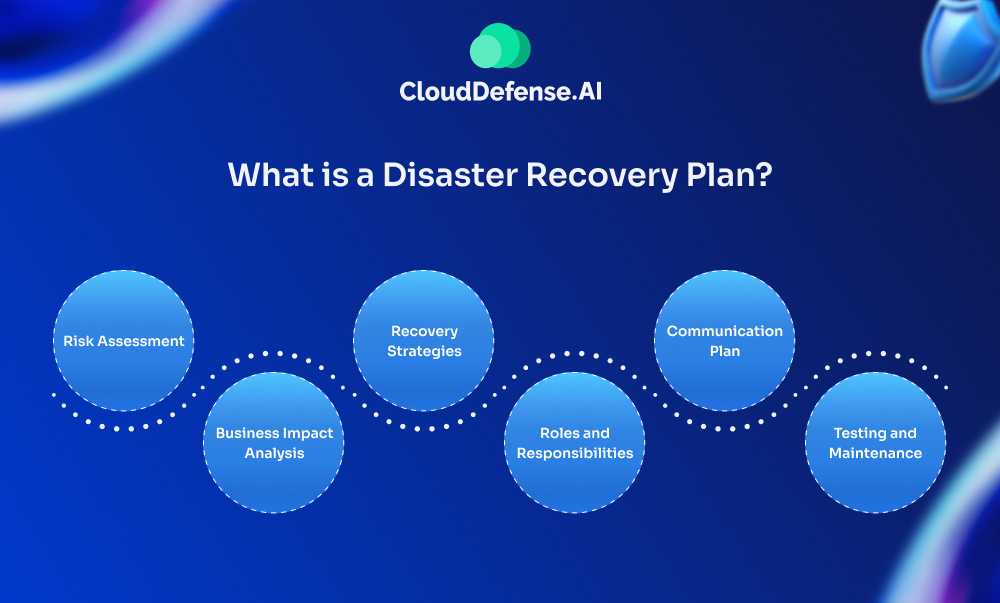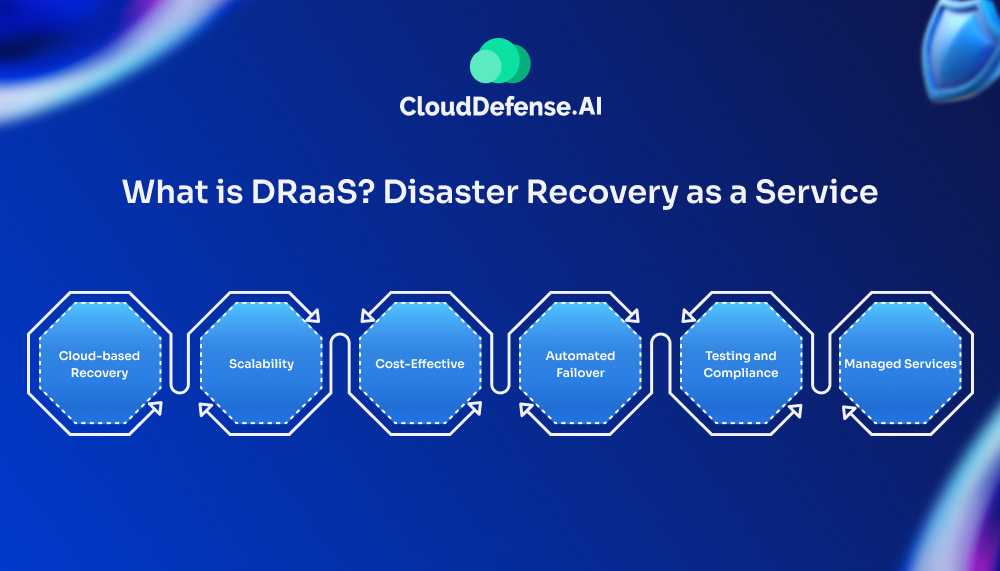What is Disaster Recovery?
Disaster recovery, short for DR, is the structured approach that organizations take to restore normal business operations following a disruptive event. The primary goal of DR is to minimize downtime, reduce data loss, and maintain business continuity, even in the face of significant challenges.
A well-crafted disaster recovery plan is a major component of this process, outlining the steps needed to recover critical systems, applications, and data as quickly as possible—ideally within minutes of an outage. This plan is not just a reactive measure but a proactive strategy that requires a thorough analysis of an organization’s IT infrastructure and potential vulnerabilities.
By preparing in advance, organizations can respond to disasters more effectively, ensuring that they can continue to operate and serve their customers with minimal interruption.
What is a Disaster?
A disaster is an event that disrupts business operations and can lead to significant financial and operational losses. These events vary widely in nature and severity, but all have the potential to cause serious damage to an organization’s infrastructure and continuity. Here are some examples of disasters:
- Cyberattacks: Ransomware, DDoS attacks, and other forms of malicious hacking can compromise or completely disable critical IT systems.
- Natural Disasters: Hurricanes, earthquakes, floods, and tornadoes can devastate physical infrastructure, leading to prolonged business outages.
- Power Outages: Unexpected loss of power can halt operations, especially if backup systems fail.
- Hardware Failures: Malfunctions in servers, data storage systems, or other essential hardware can disrupt access to crucial data and services.
- Human Errors: Mistakes made by employees, such as accidental data deletion or misconfiguration of systems, can lead to significant downtime.
- Pandemics: Events like the COVID-19 pandemic can cause widespread operational disruptions due to health risks and mandatory closures.
- Terrorist Attacks or Sabotage: Acts of terrorism or intentional damage to infrastructure can have catastrophic effects on business continuity.
How Does Disaster Recovery Work?
Disaster recovery is a structured approach that focuses on quickly restoring an organization’s operations after a disruptive event. It involves three key components:
1. Prevention
Prevention aims to reduce the likelihood of technology-related disasters by ensuring that all critical systems are reliable and secure. This involves implementing tools and processes that safeguard against network problems, security threats, and human errors.
For example, organizations might use system-testing software that automatically checks new configuration files before they are applied, preventing configuration mistakes that could lead to failures.
Strict cybersecurity measures, such as firewalls and intrusion detection systems, are put in place to protect against potential cyberattacks. By focusing on prevention, businesses can minimize the risk of an outage and ensure their systems are resilient to various threats.
2. Anticipation
Anticipation involves predicting potential disasters, understanding their potential impact, and planning appropriate disaster recovery procedures. This component is crucial for preparing for a wide range of scenarios, from hardware failures to large-scale natural disasters.
Organizations use knowledge from past incidents and thorough risk assessments to develop effective disaster recovery solutions. For instance, by recognizing the possibility of hardware failure, a business might back up all critical data to the cloud, ensuring that essential information remains accessible even if on-premises devices fail.
Anticipation also requires identifying critical business functions and understanding how their disruption could affect the organization, enabling the creation of targeted recovery plans.
3. Mitigation
Mitigation focuses on the actions taken after a disaster has occurred to minimize its impact on business operations. This involves a well-coordinated response where all key stakeholders know their roles and responsibilities.
Mitigation strategies include regularly updating disaster recovery documentation to reflect any changes in systems or processes, conducting frequent disaster recovery testing to ensure all procedures work as expected, and identifying manual operating procedures that can be used if automated systems fail.
Why is Disaster Recovery Important?
Disaster Recovery is an important crucial aspect of business continuity planning. It ensures that an organization can quickly restore its IT systems and data in the event of a disruption, such as a natural disaster, cyberattack, or hardware failure.
Without an effective disaster recovery plan, a company risks losing critical data, facing prolonged downtime, and suffering financial and reputational damage. DR safeguards against these risks by providing a clear, actionable plan to resume operations and recover lost data, minimizing the impact of unexpected disruptions.
How can you Create a Disaster Recovery Team?
Creating a disaster recovery team is a foundational step in developing a good DR strategy. This team should include individuals from various departments, each bringing a unique perspective to the planning process. Key roles include:
- Team Leader: Oversees the entire disaster recovery process and ensures all tasks are completed.
- IT Specialists: Handle the technical aspects of recovery, including restoring data and systems.
- Communications Lead: Manages internal and external communications during a disaster.
- Business Continuity Planner: Aligns DR efforts with overall business continuity plans.
Once the team is assembled, regular training and simulation exercises should be conducted to ensure readiness.
What are the Best Disaster Recovery Methods?
Disaster recovery methods vary based on an organization’s specific needs, resources, and tolerance for downtime. Below are some of the most commonly used methods, each with its own advantages and considerations:
- Backup and Restore: Backup and restore is one of the most fundamental disaster recovery methods. It involves creating copies of data and storing them in a secure location, either on-site or in the cloud. In the event of a disaster, these backups can be used to restore lost data and resume normal operations.
- Cold Site: A cold site is a secondary location where an organization can set up necessary infrastructure after a disaster occurs. It is essentially a shell facility with minimal equipment and resources, allowing the organization to start from scratch in the event of a major disruption.
- Warm Site: A warm site is a secondary location that is partially configured with some hardware, software, and data backups. It can be quickly activated to take over operations in the event of a disaster, offering a middle ground between cold and hot sites.
- Hot Site: A hot site is a fully operational backup location that mirrors the primary site in real time. It includes all the necessary hardware, software, and data to take over operations almost immediately after a disaster strikes.
What is a Disaster Recovery Plan?

A Disaster Recovery Plan is an essential blueprint for all organizations to regain functionality and stability after experiencing a disruptive incident. Let’s check out what an ideal Disaster Recovery plan should look like:
1. Risk Assessment
Risk assessment identifies potential threats to an organization, including natural disasters, technological failures, and human-related issues. By evaluating the likelihood and severity of each threat, organizations can prioritize risks and allocate resources effectively to mitigate potential disruptions.
2. Business Impact Analysis
Business Impact Analysis evaluates the importance of various business functions and processes. It determines which functions are critical and the impact of disruptions, helping to set recovery time objectives and prioritize recovery efforts for essential operations.
3. Recovery Strategies
Recovery strategies define methods for restoring systems and data, including backup and restore, cold sites, warm sites, and hot sites. Each method varies in cost and recovery time, and strategies are chosen based on budget, operational criticality, and acceptable recovery time objectives.
4. Roles and Responsibilities
Assigning clear roles and responsibilities ensures an organized disaster recovery effort. It specifies tasks for team members, including recovery coordination, stakeholder communication, and technical restoration, streamlining the process and ensuring prompt, effective action.
5. Communication Plan
The communication plan details how information will be shared with stakeholders, employees, and customers during and after a disaster. It includes communication channels, update frequencies, and key messages to manage expectations and maintain trust throughout the recovery process.
6. Testing and Maintenance
Regular testing and maintenance involve simulating disaster scenarios and updating the plan as needed. Drills assess readiness, while updates reflect changes in infrastructure and processes, ensuring the plan remains effective and addresses any identified weaknesses or gaps.
What is DRaaS? Disaster Recovery as a Service

Disaster Recovery as a Service, or DRaaS, is a cloud-based solution that provides organizations with the ability to recover their critical IT systems and data in the event of a disaster, such as hardware failures, cyberattacks, or natural disasters.
DRaaS typically involves replicating and hosting physical or virtual servers by a third-party service provider, allowing for the rapid recovery of systems and data without the need for a secondary physical site. Let’s look at some features of DRaaS
1. Cloud-based Recovery
DRaaS utilizes cloud infrastructure to replicate and store an organization’s data and applications. In the event of a disaster, these can be quickly restored and accessed from the cloud.
2. Scalability
DRaaS can scale according to the needs of the business, making it suitable for organizations of all sizes, from small businesses to large enterprises.
3. Cost-Effective
By eliminating the need for a secondary physical disaster recovery site, DRaaS can significantly reduce the costs associated with traditional disaster recovery plans.
4. Automated Failover
DRaaS often includes automated failover, where critical workloads are automatically redirected to the cloud during a disaster, minimizing downtime.
5. Testing and Compliance
Many DRaaS providers offer regular testing of the disaster recovery plan to ensure it works effectively. This testing can also help organizations meet regulatory compliance requirements.
6. Managed Services
DRaaS providers often offer fully managed services, where they take responsibility for the entire disaster recovery process, allowing organizations to focus on their core business operations.
DRaaS is becoming increasingly popular as organizations recognize the importance of maintaining business continuity in a potentially disruptive digital industry.
Final Words
Disaster recovery is not just about reacting to a crisis; it’s about being prepared for the unexpected. By understanding the importance of disaster recovery, assembling a capable team, and selecting the appropriate recovery methods, organizations can protect themselves from severe operational and financial losses. Regularly updating and testing the disaster recovery plan ensures that it remains effective and responsive to new threats.







